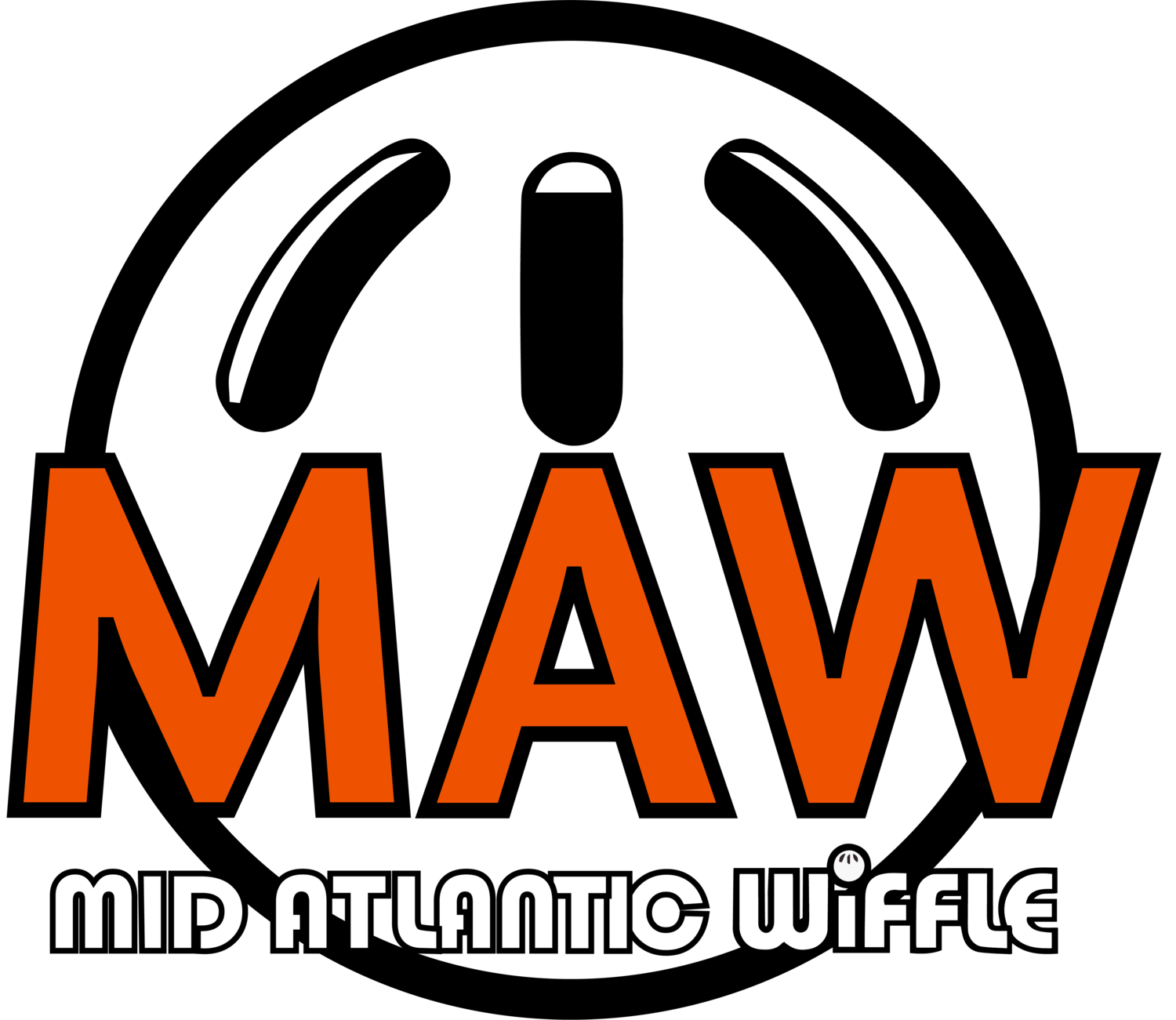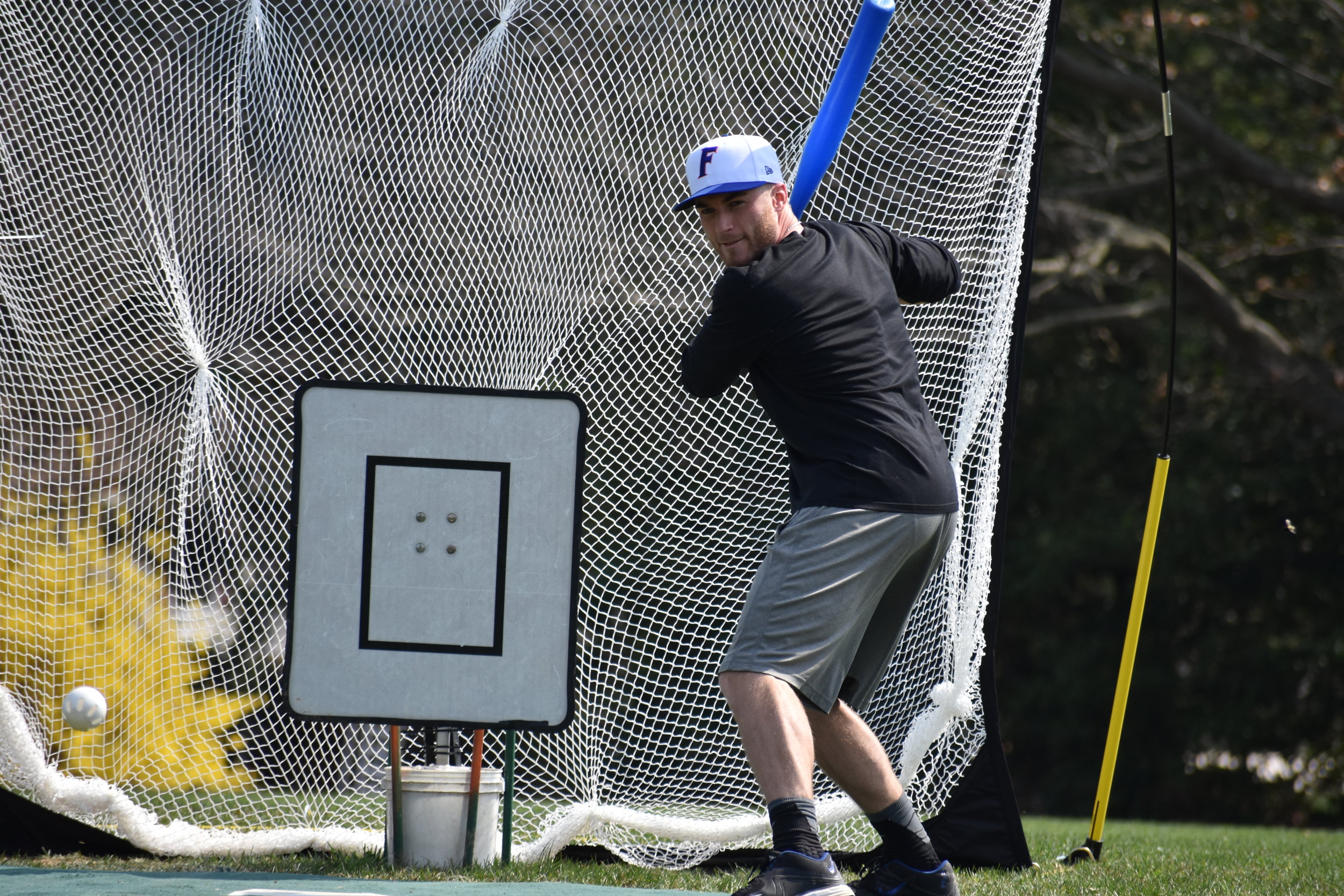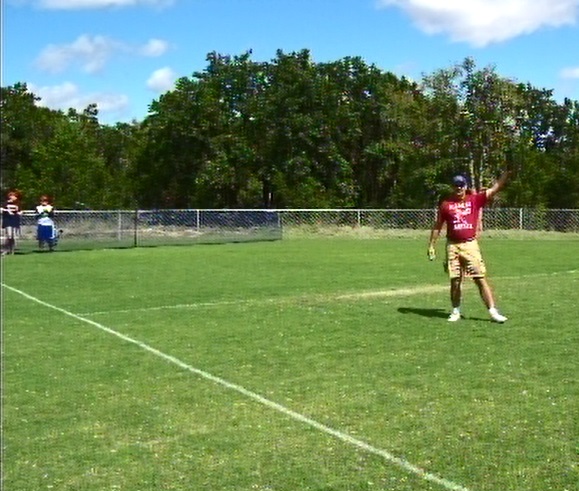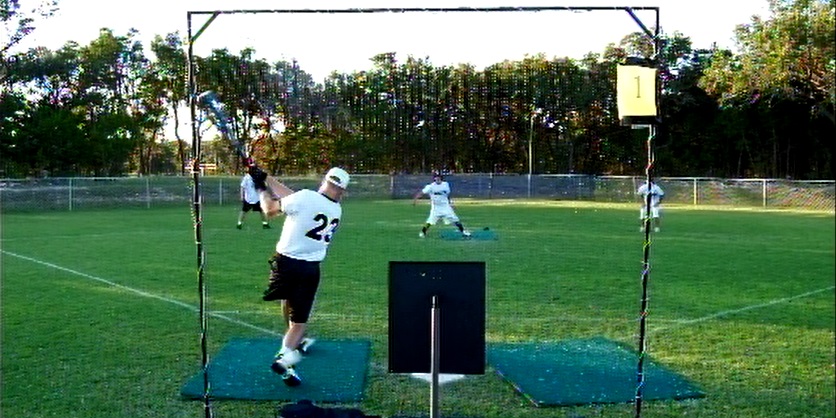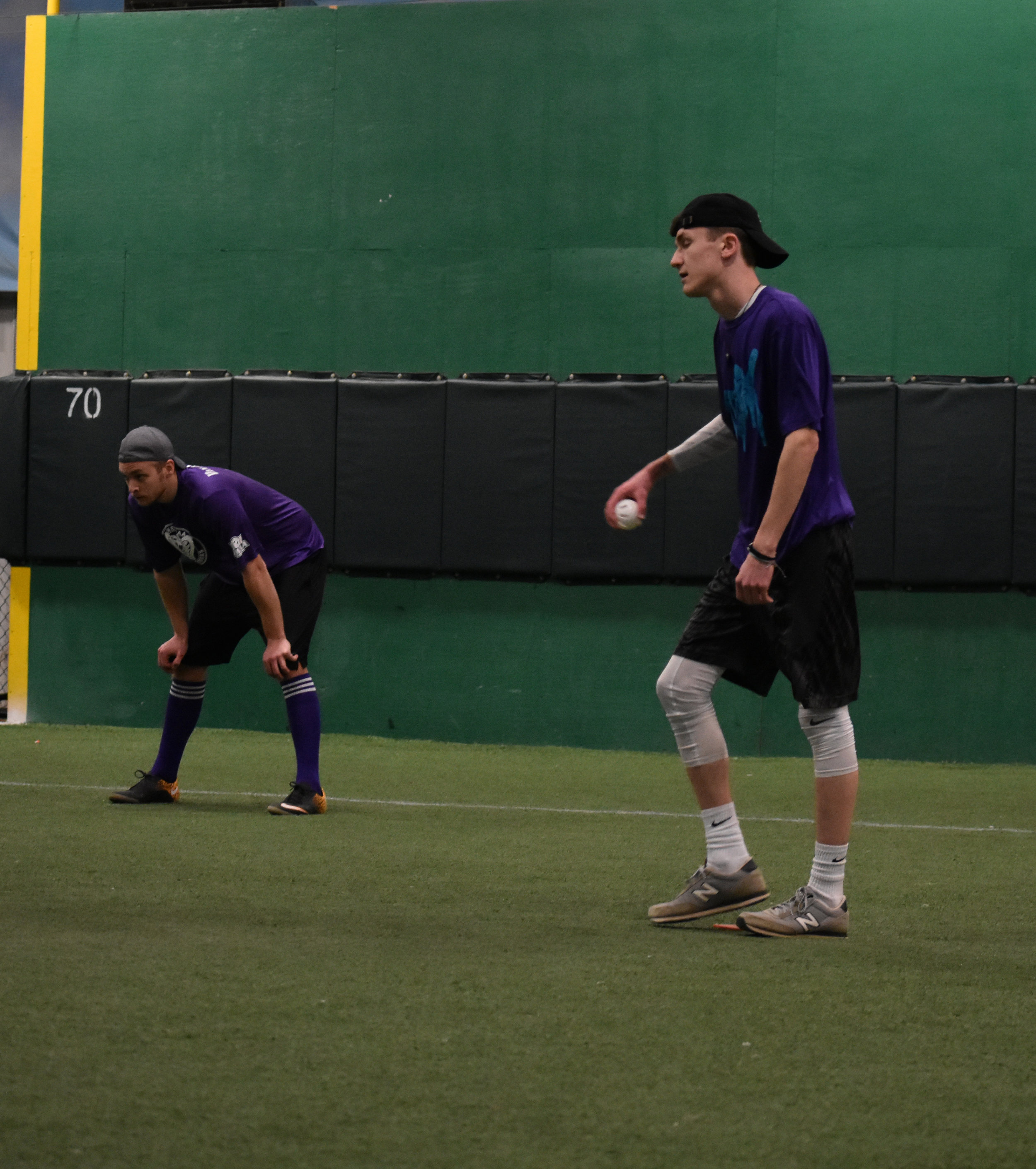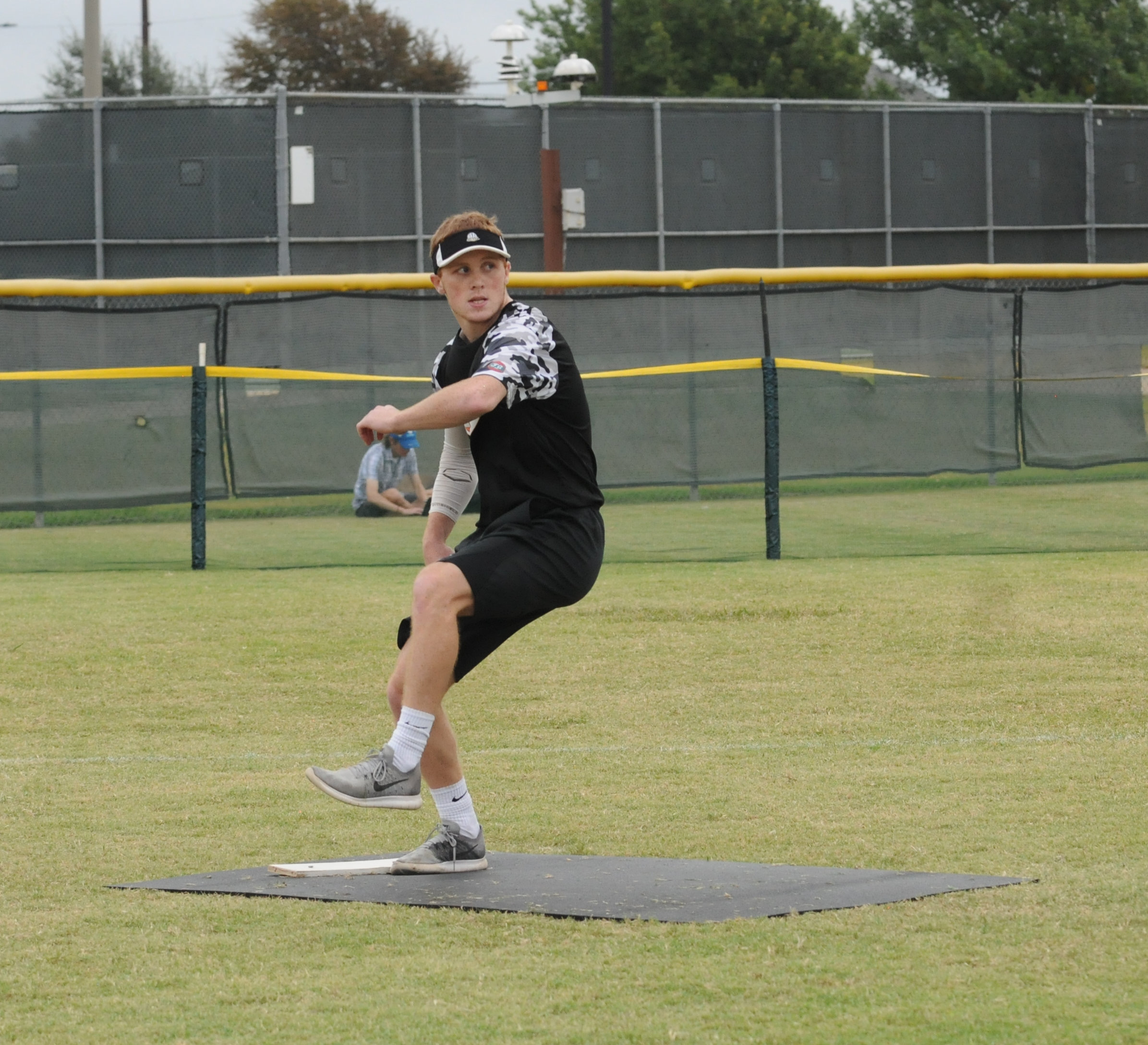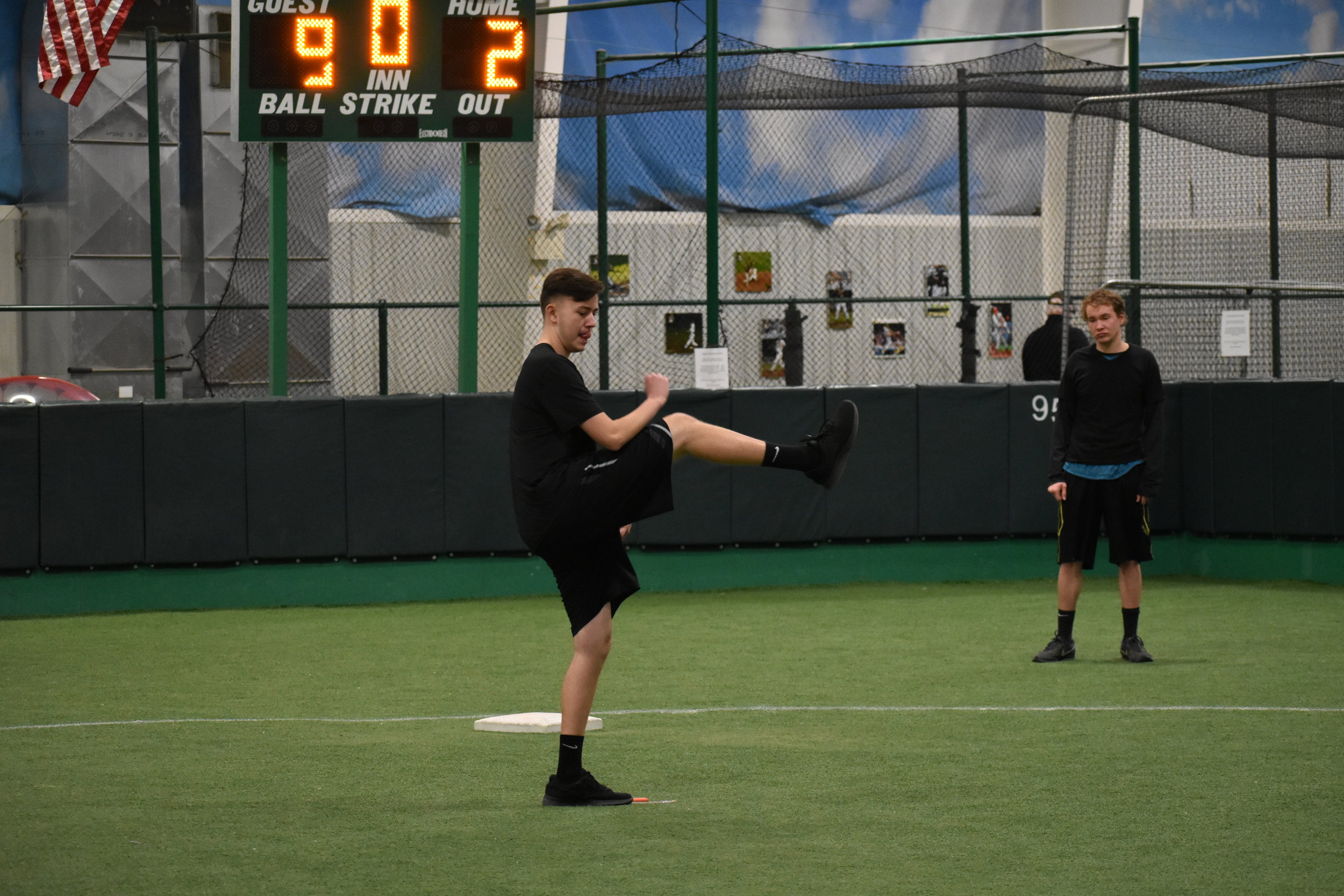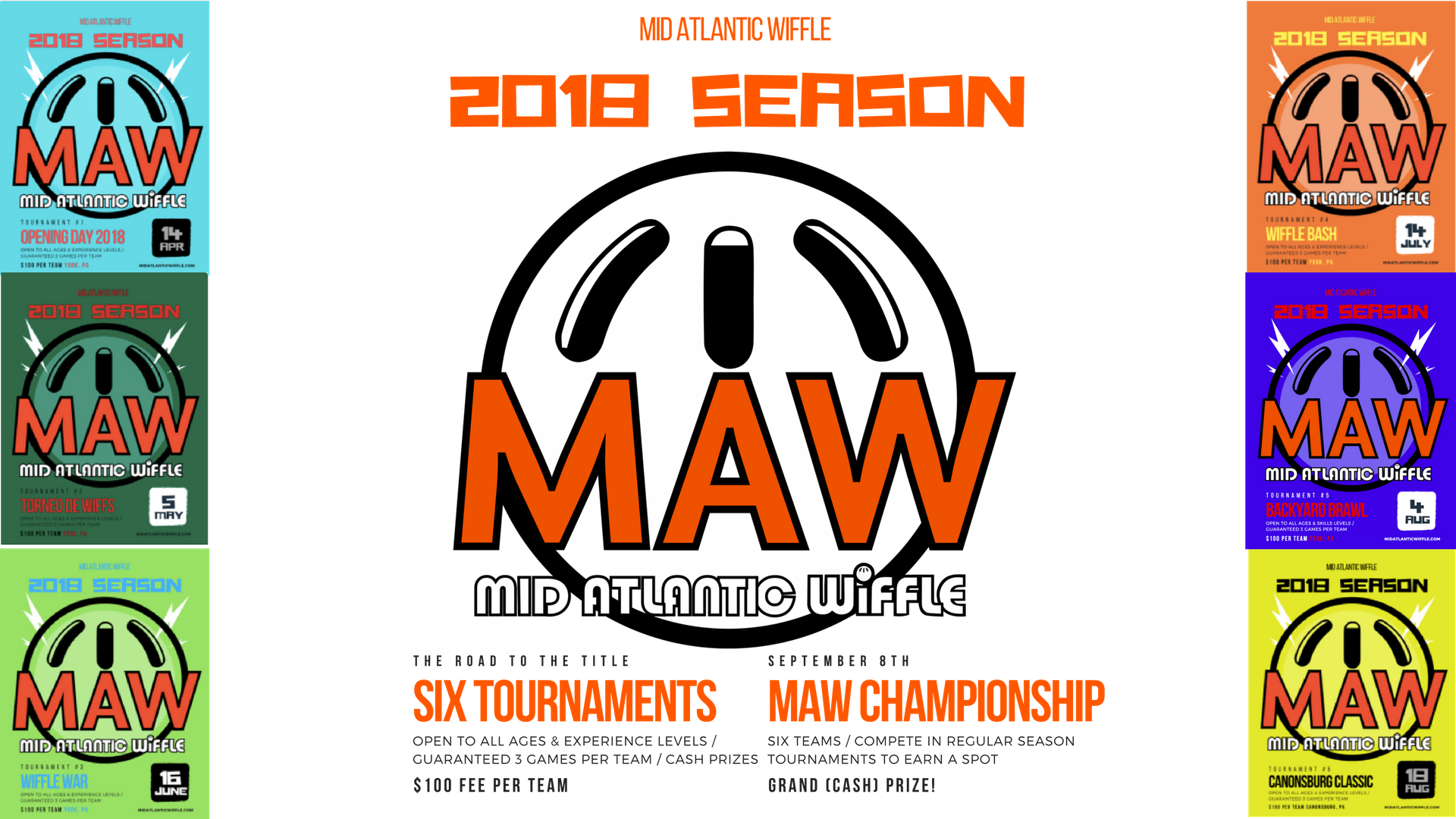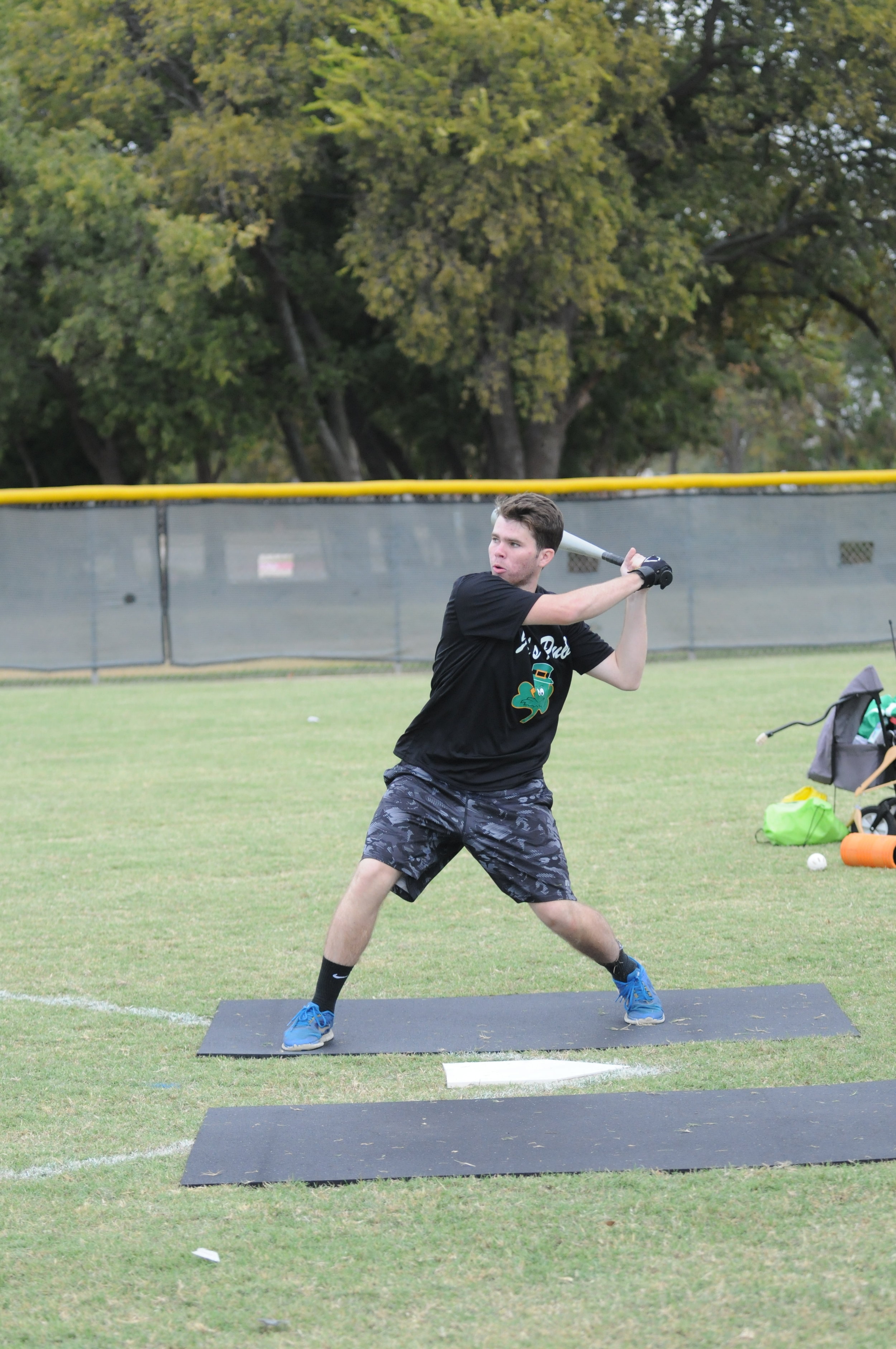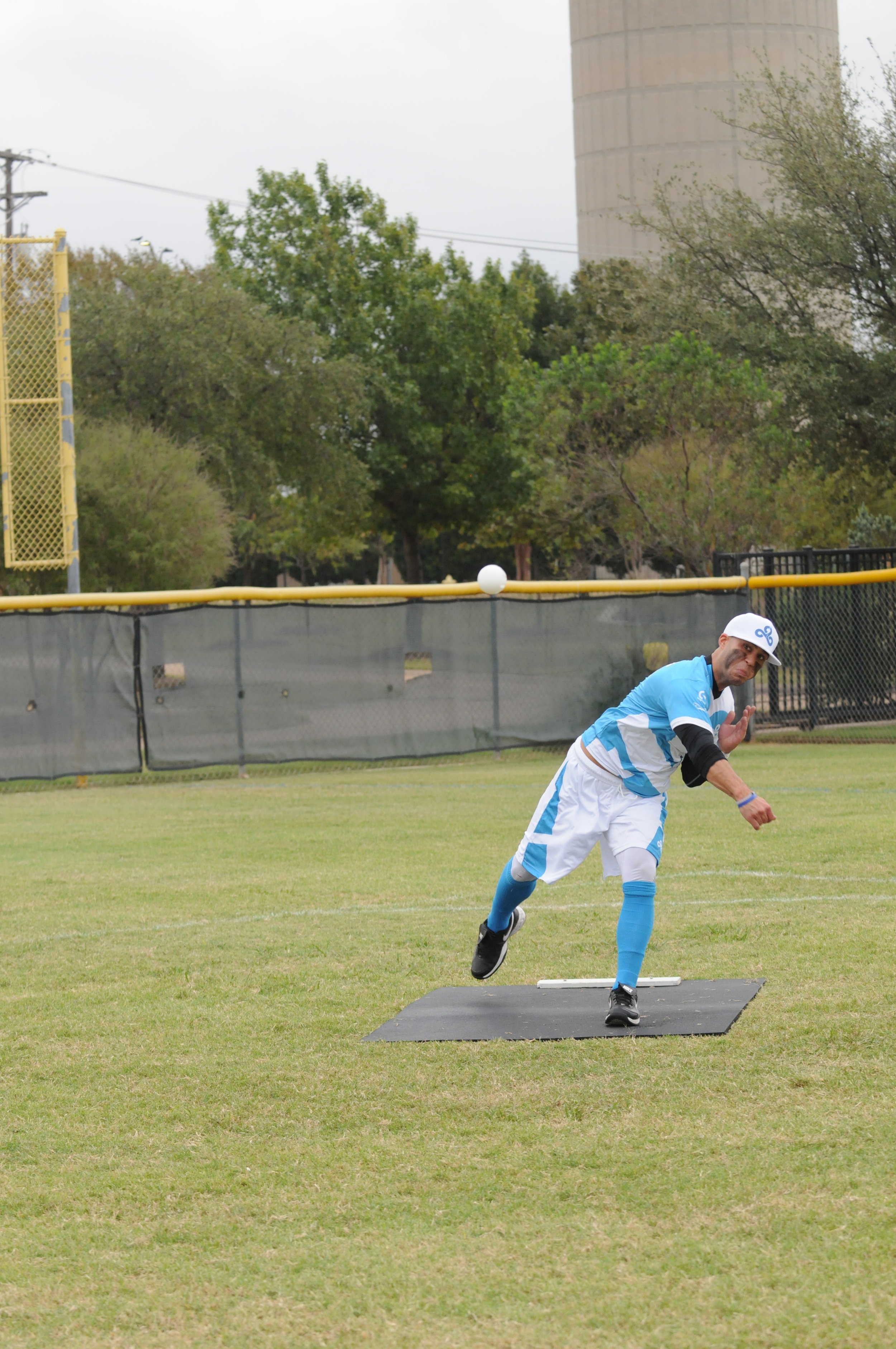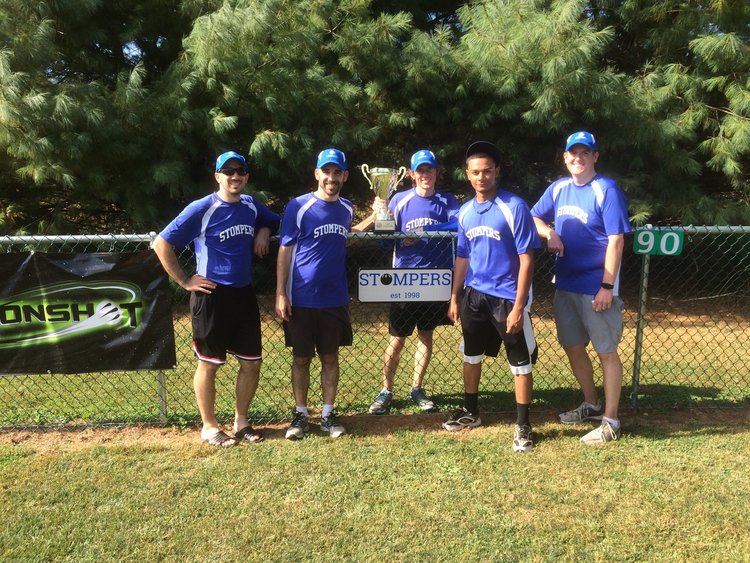Worlds will collide on June 16th as Mid Atlantic Wiffle hosts Wiffle Wars at the Shi Wiffleball Park in York, PA!
The eclectic ten-team field includes multiple championship caliber teams and highly talented players from all over the northeast, each with their own unique styles of play and experiences. While every team ultimately has their eyes set on a first-place finish and points towards the MAW season standings, there are several other factors at play that make this tournament a can’t-miss event!
Aces Abound
If you are a fan of top tier Wiffle Ball pitching, then this is the tournament for you! There will be no shortage of quality and intriguing arms in York this weekend.
Connor Young and Dan Whitener provide My Name is ERL with an excellent 1-2 punch on the mound. Young has pitched well in multiple places this season – including MAW – and appears to be taking the final steps to becoming the well-rounded, smart, ace level pitcher everyone knows he can be. Few pitchers in the game have as electric stuff as Whitener, who threw a perfect, perfect game against the Stompers in May, striking out all 12 batters he faced.
2017 Fast Plastic Texas Open champions Cloud9 will make their MAW debut on Saturday with Ty Wegerzn and Sean Steffy leading the way on the flat hill. Last October, Cloud9 rode that duo to a tournament victory and will be looking to do the same in York. The Stompers will be at full strength once again, which means the 5-time MAW tournament champions will go three deep on the mound with Chris Sarno, Jordan Robles, and Nick Schaefer all available. The debuting WILL Waves boast at least a pair of high upside arms in Jordan Castelli and Mike Graziani.
If they were playing as one team, no group would have as much pitching depth as the boys from the Ridley Park Wiffleball League. After making their MAW debut in May, the Longballs are back for a second go around but this time split into two full teams (Longballs Blue and Longballs Red). That Ridley Park can enter two teams that have a very good chance of making it to the single elimination round is a testament to the young talent in that league. There are a handful of quality pitchers spread across the two Longballs squads, but keep a close eye on right-handed pitcher Sean Bingnear. Bingnear was impressive in May, allowing just one run – a walk off solo shot to Dave Capobianco in a play-in game – over 7 1/3 innings of work. He is off to a strong start in the RPWL this year as well and has all the makings of a top-flight pitcher.
The fact that we have gotten this far without mentioning 2017 MAW Rookie of the Year recipient Jarod Bull speaks volumes about the level of pitching expected on Saturday. Bull did not pitch in May and while his status is still up in the air, it is believed he will likely see game action on Saturday. Bull was his usual solid self in April, allowing two runs in his six innings of work. Also, don’t overlook his fellow Yak, Jared Laird, who is quietly putting together a solid season. Laird has eaten up 10 2/3’s innings for the Yaks while pitching to a solid 4.50 ERA.
What to Make of ERL
It has been a strange 2018 thus far for My Name is ERL.
From the Winter Classic in February through the upcoming tournament this Saturday, the New Jersey based squad has been under a constant state of construction. To illustrate that point, Saturday will mark the fourth different roster in four 2018 tournaments ERL will have utilized. The team has played well at times but doesn't have more than a third-place victory to show for it. One pitch here and one hit there and ERL is looking at a totally different situation ending into the midway point of the season, but it just hasn’t come together for them yet. Connor Young is hoping that ERL’s fourth different lineup of the season – Young, Gerard Fitzgerald, and Dan Whitener – will be the charm. Whitener – described by Young as a “depth move” back in May – was virtually unhittable at Torneo de Wiffs and will no doubt be counted on in much more important situations on Saturday. Fitzgerald – known for his clutch bat – will be counted on to give his team the big hits they have been so sorely missing.
Despite the inconsistency, ERL currently sits in second place in the points standings and looks poised to make another deep post-season run. A big tournament on Saturday – one where everything finally clicks into place for them – would certainly be a much-needed confidence booster as we head into the back-end of the season.
Halfway Mark
Wiffle Wars is the third tournament in the six tournament MAW regular season and the final MAW tournament before July, which puts us at the halfway mark of the 2018 spring/summer calendar. This tournament will no doubt set the stage for the second half of the Mid Atlantic season.
While it is unlikely that ERL will pass the Stompers in the Championship Tournament standings on Saturday, they can certainly close the gap while also creating some distance between themselves and the rest of the field for the all-important #2 seed. The Yaks will look to keep ERL in their sights while breaking out of a three-way tie for third with the Naturals and New School Risers, both of whom will be inactive on Saturday. A first or second place finish for a debuting team like Cloud9 would place them right in the mix. The Barrel Bruisers – currently on the outside looking in for the Championship Tournament – will look to tread water without their top pitcher, Chris Owen, and pick up some points in the process.
For their part, the Stompers hope to continue their winnings ways that have them on a 19-1 run since last September. It is fair to say that if the Stompers – who have already proven themselves against quality competition during their run – come out on top again on Saturday, that it will place them in rather rarified air.
Return of a Hall of Famer
You know that modified blue screwball bat with the replacement handle that you swing? He invented that. Remember the 2004 Fast Plastic regular season? His team went 31-1. How about the 1999 Fast Plastic Magazine Team of the Year award? His team won that. And oh yea, earlier that same season, he finished 3rd – by himself – in the stacked Shamokin, PA tournament outlasting 16 other teams in the 19 team field including the Fluffheads, No Johnnies, Stompers, and Shamokin Busers. In 2004, his team came one unfortunate injury away from capturing the Fast Plastic National Champion. Wiffle Up? He and his brother completely dominated that circuit in its early years.
Tom LoCascio – the heart and soul of the legendary In the Box squad– did it all during an illustrious Wiffle Ball career that ostensibly spanned a decade but was actually the culmination of lifelong practice and dedication. Tom is a true first ballot hall of famer and one of the great ambassadors of the game. On June 16th, he returns to the field for the first time in years, flanked by his youngest son, Gianni.
Lest you think that a former all-star caliber player cannot return after years of inactivity and win with only his offspring as his backup, need I remind you of what Dave Capobianco accomplished jut six weeks ago at MAW’s Torneo de Wiffs? Anyone that crossed paths with Tom during his heyday knows the kind of competitor he is. Simply put, Tom is not coming to lose.
It will be an honor to have Tom and In the Box in York on Saturday but don’t think this is just a legend doing a victory lap – Tom, Gianni, and In the Box are in it to win it.
Pool Play Games to Watch
The tournament format calls for each team to play three games in the pool play round with all 2-1 or 3-0 teams advancing to the single elimination round. The matrix style pool play format means that teams can largely control their own destinies – win two games and you are in. Every game matters under this format, but there are a few games in particular that have caught our eye as potential “make or break” contests.
York Yaks vs. Longballs Blue (8:00 AM scheduled start)*: These two squads should be evenly matched and whoever wins this early day game will put themselves in line to pick up two round robin wins.
Longballs Red vs. WILL Waves (2:00 PM scheduled start): Two up-and-coming Pennsylvania NWLA affiliated all-star teams meet in this pivotal late day pool play matchup. It will be the third game of the day for both teams and with how the schedule plays out, there is a solid chance that the winner of this game will advance onto the elimination round with the loser left on the outside-looking-in. Both teams are young, enthusiastic, and full of upside which should make for an exciting game.
Stompers vs. Cloud9 (2:00 PM scheduled start)*: On paper, the meeting between the red hot 2017 MAW Champions and the 2017 Fast Plastic Texas Open tournament champions is the most anticipated of the pool portion of the schedule. Both teams are as well-rounded as they come with top tier pitching and offenses that can hurt you from any part of the lineup. With several of the games' top players involved, this is one game you won’t want to miss!
York Yaks vs. My Name is ERL (3:00 PM scheduled start time): This game is both a re-match of one of the two 2017 Championship Tournament semi-final series as well as an encore of May’s 3rd place game. ERL came out on top in both and in fact, have won their last two games versus the Yaks 1-0 thanks to a pair of solo shots off the bat of Connor Young. This game is almost certain to have elimination round implications. A first-place seed, a spot in the elimination round, or both could very well be up for grabs.
follow along
Follow along with the action on Saturday with several streaming games throughout the day. In addition to the two asterisked games listed above, the 10:00 AM game between My Name is ERL and the WILL Waves, plus one semi-final game and the tournament finals will be streamed live on Mid Atlantic Wiffle’s Facebook page*. In addition, follow along on our other social media accounts for periodic updates throughout the day.
Twitter: @midatlanticwiff
Facebook: facebook.com/midatlanticwiffle
Periscope: @midatlanticwiff
Instagram: midatlanticwiffle
* @midatlanticwiff on Periscope will air these games in the event there is any issue with Facebook.
